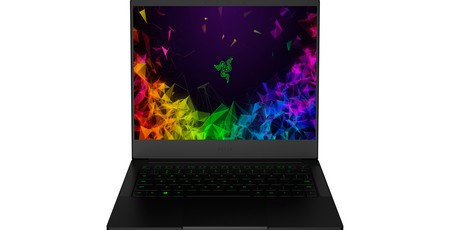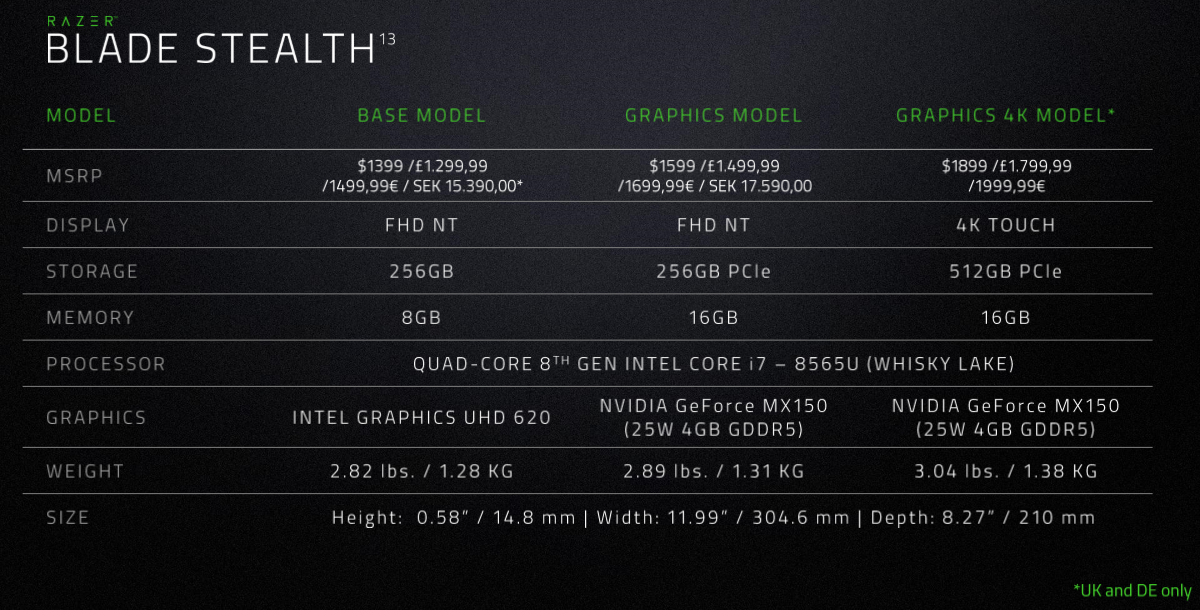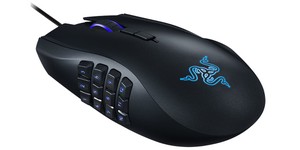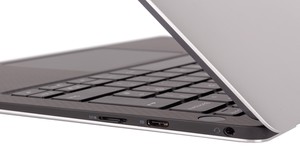
Razer is today announcing an update to its Ultrabook offering, the Razer Blade Stealth. Now to be officially known as the Razer Blade Stealth 13, the new unit introduces the option of having a discrete GPU for the first time. We were invited to a hands-on preview event and managed to run a few benchmarks – please note that the unit we tested is a development sample only and was running custom Nvidia drivers, so the results should only be taken as an indication rather than gospel.

The Blade Stealth 13 will now come in three SKUs instead of two, and all will now be using a quad-core CPU. Specifically, it’s the 8th Gen Intel Core i7-8565U, which sports Hyper-Threading and a peak boost speed of 4.6GHz. That’s a 600MHz increase, but all-core boosting looks to be largely unchanged, as we measured 2.8-2.9GHz after sustained load, which is also what we saw with the Core i7-8550U (used in the previous generation Stealth) in the Dell XPS 13 9370, the laptop that will also serve as our comparison model in the benchmarks.
These two benchmarks are fully multi-threaded, so it’s no surprise to see similar results. The peak boost speed should result in slightly nippier performance in less heavily threaded workloads, though.
Starting at the bottom of the stack, we have the Base Model, which actually comes in at lower price than the outgoing dual-core SKU, dropping from £1,499 to £1,299. This is achieved by moving from a 3,200 x 1,800 touch panel to a regular 1,920 x 1,080 (FullHD) display, dropping from 16GB to 8GB of dual-channel LPDDR3 2,133MHz memory, and downgrading from PCIe storage to 256GB of regular SATA storage.
Up from this is the £1,499 Graphics Model, which gets you back to 16GB of RAM and PCIe storage while retaining the FullHD display. The biggest change here, of course, is the inclusion of the Nvidia GeForce MX150, a 25W GPU with 4GB of onboard GDDR5. The range tops out with the Graphics 4K Model, which has the same GPU, introduces a 3,840 x 2,160 touch-enabled display, and doubles the PCIe storage to 512GB – you can expect to pay £1,799 for this. The Graphics 4K Model is also the one we saw and played with, and a quick look at HWMonitor revealed the SSD to be a Samsung PM981, which lived up its promised read/write speeds of 3,000MB/s and 1,800MB/s respectively using a quick CrystalDiskMark run.
The Fire Strike score of 3,336 shows clearly that the GPU has much more power than the onboard Intel graphics. In real terms, you’re looking at being able to play easy-to-run esports titles at 1080p with medium settings – we jumped into a few games of Overwatch to confirm, and the game was consistently smooth using these settings. Gaming does cause the fans to ramp up noticeably, but it never sounds like it’s going to take off, and temperatures remained in check – more detailed testing is needed to assess this side of things, though.

The chassis has been given a makeover, although it’s still CNC-milled, black anodised aluminium with a great finish, albeit one that continues to be a total fingerprint magnet. Razer says ‘its matte black color is anodized deeper into the aluminum at a sub-molecular level for maximum durability’ - erm, cool… One thing we do like is the riddance of the green-backlit Razer logo in favour of a ‘tone-on-tone’ one that’s much more neutral and professional.

At 304.6mm wide, the chassis is 16.4mm shorter here than before, but there is 4mm of extra depth (210mm) and 1mm of extra height (14.8mm) to give the internals extra cooling room. It’s still a very compact machine, and the weight is impressively in the same region as before, ranging from 1.28kg to 1.38kg.
Regardless of display chosen, the chassis redesign benefits from extremely thin ‘Micro Edge’ bezels measuring just 4.9mm thick – it’s a great looking machine, and we’re happy Razer has kept the webcam (now with Windows Hello support) mounted along the top edge. Both the 1080p and the 4K panel have 100 percent sRGB gamut coverage, and all receive individual colour calibration – monitor testing wasn’t possible during the preview session, however.

As is preferred, all connectors are located along the sides. Both sides have a single USB 3.0 Type-A connection and one USB 3.1 Type-C connector. Both Type-C ports can be used to charge the laptop, but only one is Thunderbolt 3-enabled, allowing the Blade Stealth 13 to support external GPU docks like Razer’s own Core range. You also get a single audio jack with headphone/microphone capabilities, and Intel Wireless-AC 9560 is used for Wi-Fi and Bluetooth.

The battery is rated at 53.1Whr, which is ever so slightly (0.5Whr) less than before. Razer is still promising ‘up to 13 hours’ battery life, but as expected that only applies to the Base Model (no discrete GPU), and you can expect gaming workloads to shorten it considerably. The laptops all come with the same 65W charger which is pleasingly dinky.
The keyboard supports Chroma RGB lighting via the Synapse 3 software, although it’s single-zone not per-key. Typing is said to be improved, with the keyboard switches offering a 63g click force. Razer has also installed a larger Microsoft Precision glass touchpad, and it’s now using four speakers instead of two. These really do have some oomph given the size of the laptop.
The new Razer Blade Stealth 13 laptops should be available now from the Razer online store and selected retailers. More information is available on the official website.

MSI MPG Velox 100R Chassis Review
October 14 2021 | 15:04









Want to comment? Please log in.